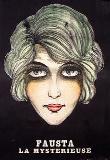The Che myth
Michelle Malkin blogs that Target's pulled the Che CD case but still carries the Che Calendar.
Nothing shows what an ignoramus you are like having a Che Calendar hanging on your wall.
Yesterday I was talking to Mary Anastasia O'Grady of the WSJ, and I asked her, what book would she recommend for a quick primer on Che? Mary's choice is The Che Guevara Myth and the Future of Liberty by Alvaro Vargas Llosa, published by The Independent Institute. I read the whole book (67 pages of text) in one sitting last evening.
As it turns out, Alvaro had an epiphany because of Che's image hanging on a wall (page 2):
A few years later, I spent a semester studying at an American university. Che Guevara made a new attempt to seduce me. This time, my friends were mostly politically active Puerto Ricans who wanted their land to be independent.It never ceases to amuse me how many independentistas come to the USA for college. But I digress.
One of them hung a poster of Che Guevara on his wall and, next to it, a picture of "Comrade Gonzalo", the genocidal leader of Shinning Path, Peru's Maoist organization.And that's another thing: the rich Marxists. When I was at the University of Puerto Rico, one of the most Marxist guys around drove a convertible Jaguar. Now, when you realize that a Jaguar in Puerto Rico at that time cost twice what it cost in the continental USA, you really appreciate the meaning of the word irony. Alvaro continues
As I came into the room one afternoon and this couple [Che and "Comrade Gonzalo"] faced me from the wall, I was paralyzed. It suddenly downed on me why my South American friend from boarding school had never been quite able to persuade me to take up Che.I highly recommend The Che Guevara Myth and the Future of Liberty
There it was, pure and simple: just like Abimael Guzman, Che was the negation of what I most seemed to long for in this complicated word - freedom and peace. I must have vaguely sensed this at school, but now, for the first time, I was able to fully grasp a precious truth: one should never be confused by the many variations of that species: the tyrant. Stalinist Che Guevara and Maoist Abimael Guzman belonged to different camps and represented contrasting attitudes to life - the former being the quintessential pinup, the latter a bizarre recluse - but what they had in common, their lust for totalitarian power, was much more important than their differences.
I had experienced firsthand Shining Path's campaign of terror against the very poor peasants in whose name it purported to act. Like millions of Peruvians, I had personally been affected in different ways by this unlikely reincarnation of Cambodia's Pol Pot in the middle of the Andes. Seeing Che Guevara next to Guzman on a chic campus wall brought to light the ugly truth about the Argentine hero of the Cuban Revolution, but, more importantly, it inspired the poignant realization that all those prepared to use force to take life and property from their fellow men are soul mates whatever the ideological or moral subterfuge used to conceal their real motives. "Really, you should rip that off. You have no idea," I said to my friend, and I left the room quite disturbed.
Many years later, when I had the chance to encounter numerous other disguises for tyranny, some on the left but others on the right, I focused on that image from university as the starting point of a larger reflection. The conclusion I reached continues to haunt me today: there are myriad forms of oppression, some much more subtle than others, sometimes adorned with the theme of social justice and at other times obscured by the language of security, and recognizing and denouncing the deceitful psychological mechanisms with which the enemies of liberty attempt to bamboozle us into voluntary servitude is one of the urgent tasks of our times.
Labels: books, Che Guevara, Cuba, Latin America, trends
 Fausta's blog
Fausta's blog

<< Home